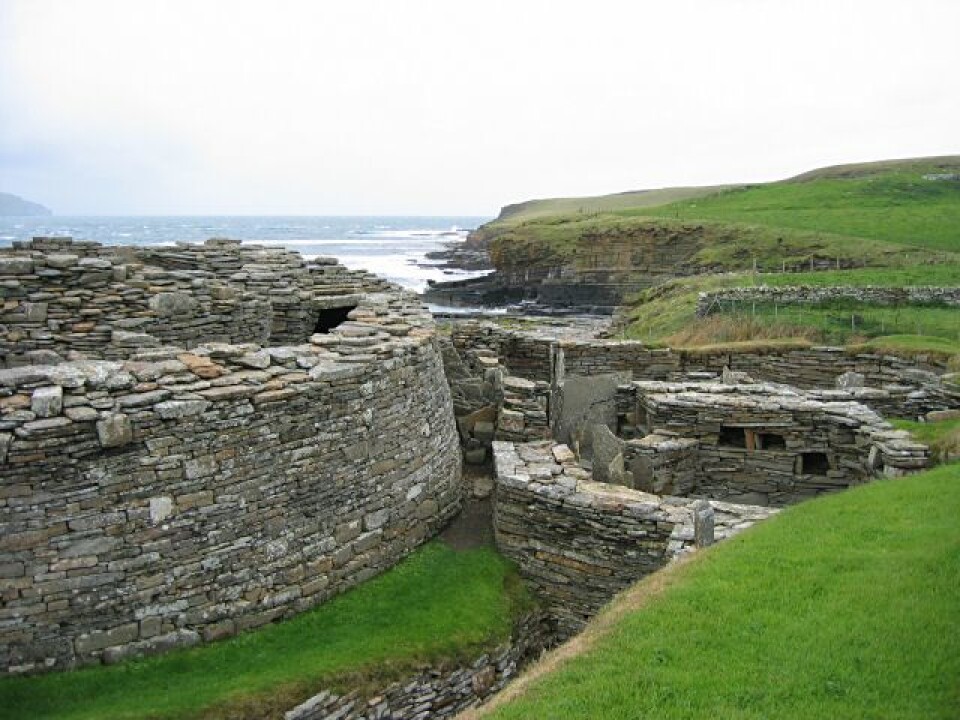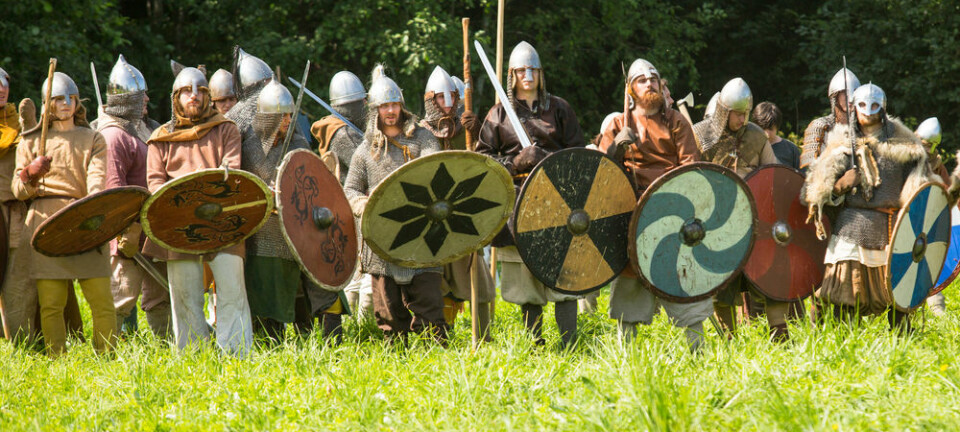![An artist’s depiction of Olaf Tryggvason when he became king of Norway in 995 AD. Tryggvason is known for converting Norwegians to Christianity, often through violence or threats. He took hostages more than once to get his way. (Graphic art: Peter Nicolai Arbo [1831-1892])](https://image.sciencenorway.no/1439511.webp?imageId=1439511&width=960&height=548&format=jpg)
Why did the Vikings take hostages?
Sometimes the captives spent their whole lives together with the hostage-takers.
Nobody wants to be taken hostage. The word is now associated with terrorist or paramilitary operations, armed robberies, kidnappings and extortion.
Yet for centuries of human history, the taking of hostages was a common political tool. It could be used to establish peace between rivalling groups, create loyalties or ensure that peace negotiations worked out.
If this sounds currently familiar, it might be because you have seen the “Game of Thrones” character Theon Greyjoy. He gets captured by the Stark Family after his father led a botched rebellion. Theon has to grow up amongst the victors.
We know that rulers throughout history have taken hostages. The Scandinavian Vikings were no exception.

“It is hard to say how common it was in Scandinavia from the evidence we have, but there is reason to assume it happened more frequently than we know,” says historian Stefan Olsson. He recently gave his doctoral dissertation at the University of Bergen, based on his research of hostage-taking in the Viking Age.
Hunde and Olaf Tryggvason
Sometimes the hostages lived their entire lives with those who had taken them, according to Olsson in his PhD thesis.
One of these stories is found in Orknøyinga Saga – also called The History of the Earls of Orkney– is a collection of stories about the Orkney Islanders from the Viking Era.
According to the tale, the Norwegian Olaf Tryggvason sailed to the Orkney Islands to spread Christianity around the year 995. Sigurd the Stout, the Earl of these islands off the Scottish coast, was disinclined to following Olaf’s orders. So Olaf has his way by taking hostage of Sigurd’s son, Hunde.

Hunde is taken back to Norway, but dies soon afterwards. So Sigurd feels he no longer has to follow Olaf’s decrees, according to Olsson.
This is one of many stories that show how taking hostages could be used to create alliances and force obedience.
Trading sons
One of the sources studied by Olsson in his doctoral research is the Anglo-Saxon Chronicle. Legal texts from the Middle Ages also tell us how hostages were treated. Olsson has studied runic inscriptions too for other traces of information about hostages.
What were the situations in which they were taken?
The US historian Adam J. Kosto has studied hostage-taking in medieval Europe and has suggested two basic hostage situations:
Two opponents fight a battle. One side wins and the other must provide hostages who go to live with the victor. They act as guarantees to keep the peace.
An example of that is a later King Olaf of Norway, Olaf II Haraldsson, who would later be known as St. Olaf. He attacked and reaped havoc on Norway’s Oppland County, as described in the old Norse Saga “Heimskringla”. Olaf dominates this region and forces people to convert to Christianity. He presses farmers to give him their sons as hostages to ensure they make the conversion from Thor and Freyja to Jesus and the Virgin Mary.
A second variation is when two equally strong adversaries voluntarily exchange hostages with one another to keep the peace. This was a much rarer phenomenon.
“One of the main reasons here was to safeguard territorial boundaries, for instance between two competitors inside the same kingdom, or between two rivalling kingdoms,” says Olsson.
“But they were not prisoners,” he explains.
The hostages could probably live a good life even though they were not free to do anything they liked. Their future was always uncertain, as the political situation could change and the hostage might become irrelevant.
“You could not simply pay ransom in silver to free a hostage. Their fate was in the hands of political developments.”
While the situation could last a life time, hostages could be held for just short periods too. Some were kept as guarantees against hostilities during peace negotiations. They were immediately released by both sides if everything worked out as planned.
Who were taken as hostages?
Women?
“Generally the hostages had plenty of social capital and a clear connection to the family involved,” says Olsson.
The sources we have mention only men, usually sons or brothers.
“We don’t know of women being taken as hostages but it is absolutely possible. Contemporary depictions of women show they could be important in political contexts, so they too could have been potential hostages.”
Romans
The hostage tradition is ancient. There are numerous examples of hostage-taking to keep empires together in ancient civilisations.
Egyptian Pharos took the sons of the kings they conquered home with them as safeguards for peace.
The Romans did too. Julius Caesar took huge numbers of hostages from tribes in Gaul when making war there in the first century.
How did the tradition come to the Nordic countries?
“It could have been that the Romans had contact with South-Germanic tribes who spread the practice further north,” says Olsson.
The earliest traces of hostages in Scandinavia are from the 4th century, according to Olsson. This was the first use of the word we know about, explains Olsson.
The tradition certainly has a long history in Europe.
Common on a prince’s CV
According to the historian Adam Kosto the practice of taking hostages was so extensive in Europe in medieval times that you could imagine it as a feature on the CV of your average prince.
Olsson says this practice continued in Sweden until the 1500s. Once Gustav I Vasa united the country there was no longer any need to take hostages to hold domestic rivals in check.
But times changed in Europe and according to Wikipedia the last use of hostages as a guarantee of good faith to secure a peace treaty between civilized states was in 1748.
--------------------------------------
Read the Norwegian version of this article at forskning.no
Translated by: Glenn Ostling
































